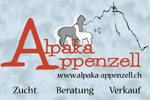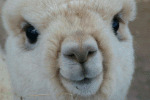Articles by Alpaca World Magazine:
Progressions in the South African Alpaca industry
By Dr Gavin Lindhorst of African Alpacas
Alpacas were first introduced to South Africa in December 2000 with my importation of 60 alpacas from Chile. This foundation herd pioneered an industry that has developed in four and a half years to include over 40 breeders and owners, and a national herd estimated at 600.
Alpacas have to compete with exotic game in South Africa. Many commercial farmers wishing to diversify have entered the realm of ecotourism and game farming. Our antelope, locally known as ‘buck’, require large farms and expensive fencing. Game parks also need an infrastructure to accommodate tourists, and be well marketed to be successful. The alpaca attracts a different market: usually the inexperienced smallholder and the life style farmer. We have less people in this bracket than in Australia and for this reason our development has been slow.
Most developing alpaca markets rely strongly on imported animals to augment their national herd. We have encountered losses due to various causes – stress related, disease related and unfamiliar pastures and toxic plants. Animals arriving from the near sterile altiplano have to develop immunity to their new environment, and pass this on to their new born cria. Vaccinations are never 100% effective. Tick born diseases, the ever threatening clostridial diseases and digestive problems have been our biggest reasons for losses.
In 2004, African Alpacas imported three pallets from Western Australia and six pallets from Chile. This substantially increased our herd numbers and new breeders. But with their problems. The protocol with Chile required testing inter alia for Johne’s Disease (JD). The pre-export quarantine was 30 days, so a blood test using anti-lama conjugate was prescribed. This test could not be done in Chile, or elsewhere in South America. Australia didn’t accept foreign blood for testing. France, Canada and the USA did not provide the service. The protocol was then modified to use a different conjugate, and blood sent to Onderstepoort laboratories in South Africa for testing. Some alpacas tested ‘suspect’. Being a herd disease, this could potentially condemn the whole consignment. Retesting was done by rectal biopsy, an invasive procedure, but satisfied the authorities when all suspects tested negative. The most effective test for JD is a faecal test over three months!
Health issues aside, the next hurdle was the transportation to South Africa. Flights were quoted from Santiago to Buenos Aires, then a trans-shipment to Malaysian Airways to Cape Town. Presales contracts were entered into based on these quotes. When Malaysian Airways suddenly put an embargo on livestock cargo from Buenos Aires, I had a real problem. There were no alternative carriers from South America to South Africa. Flights were then booked on Luxair to fly them from Santiago via Luxembourg to Johannesburg. Imagine the extra stress on the animals, let alone the extra expense! My on farm quarantine station was awaiting them in Cape Town. A Jo’burg arrival would mean state quarantine. Hmm.
My doctor confirmed I did not have an ulcer, merely indigestion.
This was developing into an international rescue mission. Alpacas in extended quarantine and stranded in Santiago. The Chilean embassy offered a charter Airforce aircraft (I won’t mention the consideration). Shipping companies were not prepared to accept livestock from South America. It HAD to be Air Malaysia, so I went into their website – found ‘cargo’ – drop down gave details of head office Kuala Lumpur, offices Asia, Africa, Americas. I composed an email expressing the plight of the alpacas, as well as the livelihood of the Chilean Aymara Indians.
They wanted to know the employment potential of the ‘previously disadvantaged’ in South Africa from this consignment. A club member is researching the purchase of a mini-mill. Short of asking President Mandela to intervene, I pulled out all stops to get the embargo lifted. It paid off. One last delay when the jumbo booked to fly them over had a bird strike and had to return to Johannesburg …….they all eventually arrived safely in Cape Town in October last year.
Many of the now imports graze content in their new home at Inca Vale Farm, Wellington in the Cape. The farm will also be a centre for training and open to the public on certain days. Support of the local Weavers’ Guild ensures a source of skilled ladies to teach others. As with other western countries breeding alpacas, there is the recurring concern of marketing fleeces. Co-operatives seem to have limited success. The figures just do not balance when one compares the production and export from Peru. A cottage industry competes with the refinements of commercially spun and woven cloth, or machine knitting. This is an area needing attention.
A new breeder has very recently imported a few suri males with the intention of actively crossing them with huacayas. This is a practice I do not support. Our registry, the SA Stud Book, is contemplating developing a separate register to accommodate these hybrids. A SA Alpaca Breeders’ Club was inaugurated with the first import, and has now voted to elevate to the status of a society. Our Breed Standards are being revisited, and valuable input is coming from two members that attended Maggie Krieger’s IAJS in Peru last October. We were also privileged to receive Jenny Jackson from Australia in August who gave us a series of seminars, and presented an ‘inspectors course’. Unlike many other registers, SA Stud Book requires all offspring to be inspected prior to registration. Others automatically register cria from two registered parents. Our system ensures gross genetic defects are removed from our stud animals.
Like Australia, South Africa is a large fibre producing country. We have the largest mohair industry in the world, and an established infrastructure for the processing of merino wool. Cashmere goats and angora rabbits have been less successful here. Alpacas are still to make their mark!
Tweet



